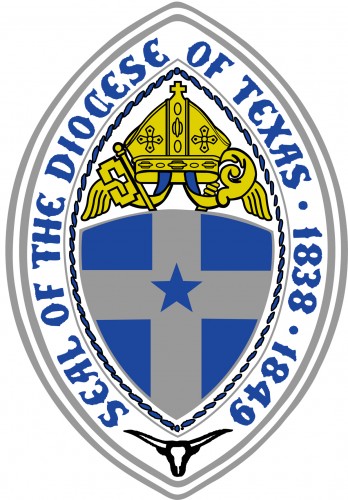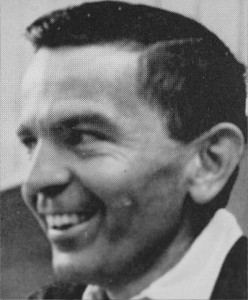Don't ask, don't tell (for 40 years)
 One of the hardest things to do in journalism is to do a fair, accurate story when you are covering an emotional, complex issue when one side of the story will not talk to you (especially if lawyers are involved). The alternative Houston Press recently published a textbook example of this kind of story and, even though I just labeled this an "alternative" newspaper, reporter Craig Malisow did about as good a job on it as you can do.
One of the hardest things to do in journalism is to do a fair, accurate story when you are covering an emotional, complex issue when one side of the story will not talk to you (especially if lawyers are involved). The alternative Houston Press recently published a textbook example of this kind of story and, even though I just labeled this an "alternative" newspaper, reporter Craig Malisow did about as good a job on it as you can do.
So what's the story about? It's horrific. It's the story about accusations against a trusted religious leader in an Episcopal school, accusations that he acted as a sexual predator and that his superiors covered it up -- for 40 years. Here is the top of the story -- it's long -- and then I'll show you the crucial passage that caught my attention:
In 1993, Bob Haslanger received a letter from his high school alma mater, St. Stephen's Episcopal School in Austin. It seemed that Haslanger, who was living in Seattle, had been designated a "never-giver," which, as the label suggests, is a category of alumni who have never donated to the school. Why was this, the school wanted to know. ...
So, Haslanger says, he flew to Austin and sat down with an administrator named Jim Woodruff. Haslanger proceeded to give what he felt was an understandable explanation for his unopened pocketbook: Between the years 1964-1968, when he attended St. Stephen's, a faculty member came into his dorm room about once a month, after lights-out, and molested him. Haslanger told Woodruff that he told the school's headmaster about that person, and the headmaster called him a liar. Now, according to Haslanger's account, here's where it got weird.
"I became too emotional to say anything when he asked me who had molested me," Haslanger says from Seattle, where he still lives. "And he asked me -- he asked me -- 'Was it Jim Tucker?' I didn't provide Jim Tucker's name. He provided Jim Tucker's name."
It blew Haslanger away that Woodruff would immediately bring up the name of the school's wildly popular chaplain, the Reverend James Lydell Tucker.
Haslanger says he asked Woodruff if he was the only one who had ever alleged such abuse. According to Haslanger, Woodruff said the school had no information on that matter.
There is much more to that one-side anecdote. But, suffice it to say, Haslanger failed to get justice. Then, later, came another fundraising letter that pushed him totally over the edge into legal warfare against his old school.
This was the letter that would disturb him so much that he took a leave of absence from his six-figure job as chief operating officer of a manufacturing company, which wound up being a permanent leave. This was the letter that unraveled all the effort that had gone into kicking self-medication with drugs and drink, and wiped away all the help he had received in therapy: The school wanted Haslanger to contribute to a new scholarship in the Reverend Jim Tucker's name.
Before he started spiraling, Haslanger wrote letters to St. Stephen's and to the Episcopal Diocese of Texas, here in Houston.
 Now you know where the story is going. Right? Slowly, but surely other accusations began to surface and the story built and built.
Now you know where the story is going. Right? Slowly, but surely other accusations began to surface and the story built and built.
But like I said, it's hard to tell a story when only one side has any incentive to talk. So what can you do? What punches a whole in the legal dam and gives you on-the-record material that can be published? Veteran journalists know the answer -- documents.
Thus, the key to the story:
During a July 2007 Houston Press interview about the allegations against Tucker, diocese spokeswoman Carol Barnwell chuckled over the idea of a "conspiracy." How ludicrous.
Either Barnwell wasn't being candid, or her boss didn't fill her in on the fact that the diocese had hired a risk analysis company to investigate the allegations and had, three months earlier, outlined clear evidence that there was in fact a conspiracy among St. Stephen's and diocesan authorities. And, in September 2007, the diocese released a summary of that investigation. ...
In the end, reporters end up having to write passages like this:
Nothing shuts up men of God like a lawsuit. When they're fund-raising, they point to all the good work they're doing in Jesus's name. But the truth, the way and the light crumble under the weight of a civil complaint. Being on God's side no longer cuts it. No, for that, you need lawyers.
Jim Tucker, who retired in 1994, would not comment for this story. Nor would Jim Woodruff. Nor would Fred Weissbach, the headmaster of St. Stephen's at the time Haslanger informed the school of the abuse. Bishop Don Wimberly wouldn't talk. Neither would Bishop Coadjutor Andy Doyle.
When the Press asked Chris Phillips, the attorney representing St. Stephen's, to expound on his response to the suit, Phillips said he couldn't comment on confidential matters -- even though both the plaintiffs' complaint and the school's answer are public records.
It's a long story, with many terrible details.
There is also an interesting subplot, which is that no one suspected this priest -- a married man with children of his own -- because he was part of a school administration that was progressive, that was on the right (that would be left) side of social-justice issues during the civil right era. And where did the diocese send him, silently, when it was not safe to leave him at the school? To an African-American parish in Houston to work with the children there.
There is one final irony or painful fact to mention. The story ends with this note from the newspaper:
Editor's Note: In the interests of full disclosure. Houston Press Editor Margaret Downing and her family did attend the Reverend Tucker's church for two years in Houston. That was not at the time of the events described in this story.
Read it all, if you can stomach it.